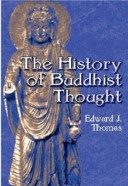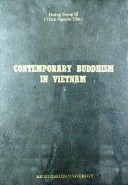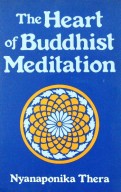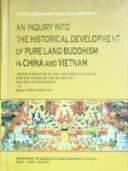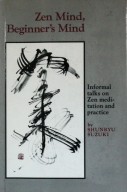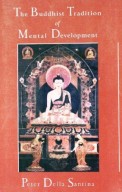Tìm Sách
Sách tiếng Anh-English >> The History Of Buddhist Thought
Thông tin tra cứu
- Tên sách : The History Of Buddhist Thought
- Tác giả : Edward J. Thomas
- Dịch giả :
- Ngôn ngữ : Anh
- Số trang : 316
- Nhà xuất bản : Routledge & Kegan Paul Ltd. London
- Năm xuất bản : 1951
- Phân loại : Sách tiếng Anh-English
- MCB : 1210000004821
- OPAC :
- Tóm tắt :
PREFACE
A History of Buddhism in the sense of a connected account of the chief events of all the Buddhist communities throughout the centuries is an ideal not yet attainable. The monumental Cambridge History of India is biasing a path, but it has so far completed only the first volume of the Hindu portion. Merely to record the known facts of some two thousand years of Buddhism would require more than one volume.
During the last few years several important works dealing with the less explored regions of Buddhism have appeared. Dr. N. Dutt’s Aspects of Mahayana Buddhism is more fundamental than appears from the title, and in The Bodhisattva Doctrine in Buddhist Sanskrit Literature Dr. H. Dayal has devoted much intensive research to one special development. A general treatment has been begun by Dr. McGovern in his Manual of Buddhist Philosophy, vol. 1, and in An Introduction to Mahayana Buddhism. From Dr. B. M. Barua we have Prolegomena to a History of Buddhistic Philosophy.
The earliest period has also received new attention. This period, according to Mrs. Rhys Davids, was so different from the picture that we find in our earliest records that she prefers to call it not Buddhism but Sakya. “Put away, for your origins, the word “Buddhism” and think of your subject as ‘Sakya’.” This is really a religious question, and the Interest that Buddhism still rouses from this point of view can be seen from Bishop Gore’s Gifford Lectures, The Philosophy of the Good Life, and the Bampton Lectures of Canon Streeter, The Buddha and the Christ. It is Buddhism as we find it actually recorded, not a hypothetical primitive system, which still forms a challenge to other religions.
Through the labours of Rhys Davids and his colleagues it has become possible to form a clear idea of one of the earliest schools of Buddhism, that of the pali tradition still flourishing in Ceylon, Burma, Siam, and Further India. It was no fault of these investigators if they were satisfied that here we have the earliest known form, or even the primitive form, of Buddhism and that all that followed was degeneration. For Mrs. Rhys Davids even the earliest known form was degeneration. But other scholars have been at work, and we now know of other schools with an equal right to claim that they were holding the primitive teaching. The problem about the primitive teaching now becomes actual.
The problem of the later history of Buddhism has also become actual. Philosophically it was no degeneration, but a great advance. This has been brought out by Professor A. B. Keith in his Buddhist Philosophy in India and Ceylon. The existence of the documents of the later schools termed MahAvAna was early made known through the labours of the Hungarian scholar Alexander Csoma de Koros, and it was in fact a misfortune that some of these documents were among the earliest to reach investigators in the West. There was then no possibility of placing in their historical order documents separated by half a millennium. But the actual texts are at last being edited and studied, and their relations to the earlier Pali and Sanskrit works are being established.
We have now a long series of important texts in the Bibliotheca Buddhica edited by Professor S. Oldenburg, of Leningrad. It is to the work of the scholars who are contributing to this task, both in their editions and their independent investigations, that I owe the greatest debt, and first of all to those of T. Stcherbatsky and Professor L. de la Valléc Poussin. I am also much indebted to other scholars working on the same lines, especially Professor S. Schayer, of Warsaw, and Professor M. Walleser, of Heidelberg. In France we have the splendid achievements of K. Senart and S. Lévi, as well as others who are now contributing to the valuable researches in the series Buddhica edited by J. Przyluski.
Important texts are also being brought out by Indian scholars, especially in the Gaekwad’s Oriental Series and the Trivandrum Sanskrit Series, and in these are appearing some of the epoch-making works and editions by the Italian scholar G. Turn, chiefly on Buddhist logic and YogAchAra. For a long time Japanese scholars have been making solid contributions. The works of the late Rev. Bunyiu Nanjio, J. Takakusu. A. Anesaki. U. Wogihara, J. Masuda, and others are well known, and the extensive and important studies of Professor D. T. Suzuki are given in the bibliography.
The legendary and earliest historical aspect was dealt with by the author in The Life of Buddha as Legend and History in the same series as the present volume. Although much work remains to be done regarding the chronology of Indian history, the sequence of thought in the development of Buddhist doctrine is becoming clear. The aim of the present work is to trace the growth of the Buddhist community, to indicate its relation to the world of Hindu and non-Hindu society in which it arose, and to follow the rise and development of the doctrines from their legendary origin into the system which has spread over a great part of Asia.
My special thanks are due to Miss c. M. Ridding, M.A., of Girton College, who has given me invaluable help in the collection of material, and to Miss G. Hjort, Ph.D., Research Fellow of Girton College, who has read, criticized, and discussed the whole manuscript.
Edwakd J. Thomas.
CONTENTS
CHAP. PAGE
Contents…………………v
Illustrations…………………vii
Preface…………………ix
Abbreviations…………………xiii
Pronunciation…………………xv
Chronology…………………xvi
- Introduction…………………1
Geography…………………3
Chronology…………………6
- The Ascetic Ideal…………………11
III. The Councils Early Schools…………………27
- Early Doctrine : Yoga…………………42
- Causation : Note on the Wheel of Becoming…………………58
- The Background of Buddhism…………………71
VII. Brahminism and the Upanishads…………………82
VIII. Dogma and Philosophy: The Soul…………………92
- Karma…………………107
- Release and Nirvana…………………119
XI Buddha…………………138
XII. Developments in Abhidhamma…………………153
XIII. Development of the Doctrine: The Buddhas…………………166
XIV. The Lotus of the True Doctrine. Note on Spells…………………177
- Popular Bodhisattva Doctrine…………………189
XVI. The Bodhisattva’s Career…………………198
XVII. The Doctrine of the Void: Note on the Later Schools…………212
XVIII. The Doctrine of Consciousness only…………………280
XIX. Buddhism and Modern Thought…………………249
Appendix I: The Scriptures…………………261
Appendix II: The Eighteen Schools…………………288
Bibliography…………………293
Index…………………303
 Facebook
Facebook
 Google
Google
 Google+
Google+
